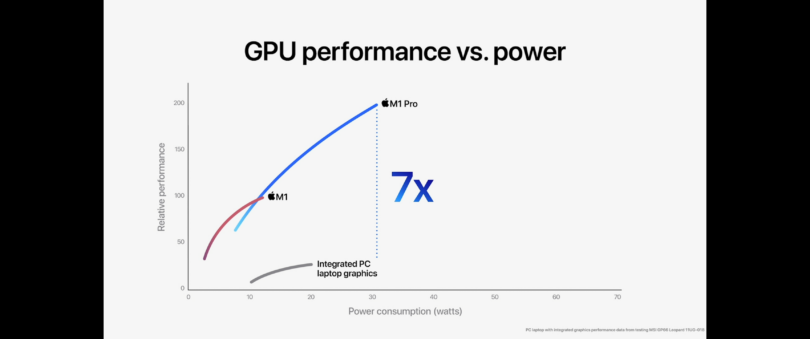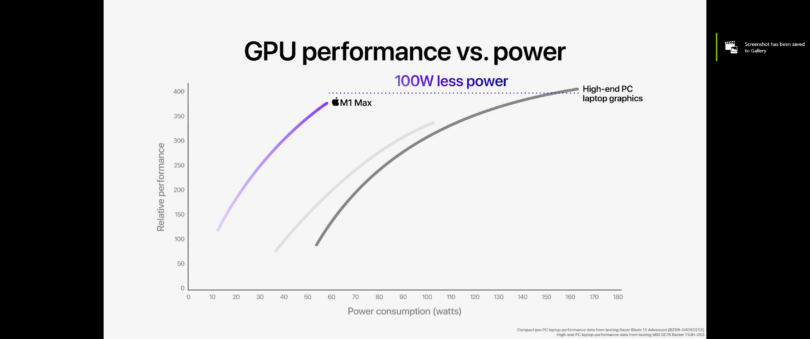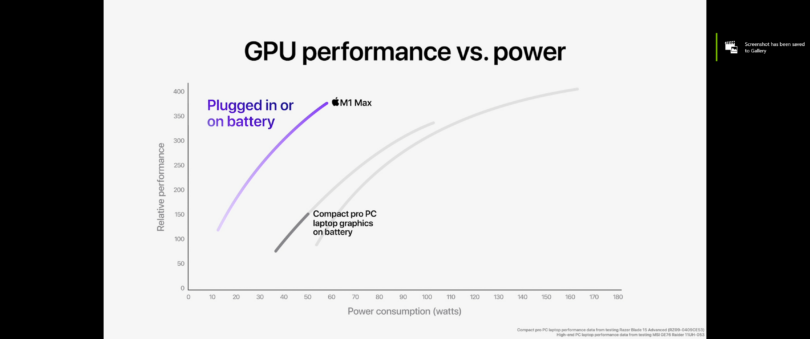
NOTE: Due to forum limitations, this re-post of the article does not include as many images. Click Here to see the original article.
Apple announced the newest M1 based Apple Silicon CPUs today at it's only conference; the M1 Pro and M1 Max. Available in their new new Mac Book Pro model laptops, these CPUs represent a substantial leap in performance and capacity compared to the original M1.

The M1 Pro features 33.7 billion transistors. It has eight performance cores and two high-efficiency cores, as well as dedicated hardware for ProRes encoding and decoding. It also features a 16 core neural engine, and a 16 core Apple GPU. As with the original M1, the memory is integrated into the CPU package. It features up to 32GB of ram with 200GB/s of bandwidth.

The second CPU is the M1 Max. At 57 billion transistors, this is the largest CPU Apple has ever made. It continues with the 8-by-2 core structure of the M1 Pro, but boosts the GPU up to 32 cores for a claimed 10.7 teraflops of power. Apple is claiming this is four-times the performance of the original M1. Additionally, the Max version of the M1 has two dedicated video encode engines, and two dedicated ProRes encode and decode engines. The Max features 64GB of 512-bit LPDDR5 for 400GB/s of bandwidth. This will allow video editors who use large amounts of VRAM from the pool of combined memory.


CPU Performance as claimed by Apple is 1.7X the M1 for both the Pro and Max, at 30 watts of power consumption. Additionally, Apple is claiming this is faster than an "8-core PC laptop chip" with a significant performance lead while using 70% less power.
The laptops Apple tested against are the MSI Prestige A11M-220 and the MSI GP66 Leopard 11UG-018.
The MSI A11M -220 is a typically sub-$1000 laptop that is powered by an Intel i7-1185G7 (4 cores / 8 threads with a TDP of 12 to 28 Watts), 16GB of RAM, and Iris Xe iGPU with 96 execution units.
The Specs of the MSI GP66 Leopard 11UG-018 is an approximately $1900 laptop that is powered by an Intel I7-11800H (8 core / 16 thread with a TDP of 35 to 45 watts), 16GB of RAM, and a RTX 3070 mobile with 8GB of VRAM. The mobile or laptop version of the RTX 3070 can be configured with several different power setting that vastly effect performance. In actual power, the mobile RTX 3070 can be anywhere from half to three-quarter the speed of the desktop RTX 3070

For the GPU, Apple is claiming a 7X improvement for performance for the M1 Pro at 30 watts compared to "Integrated PC laptop graphics" at 20 watts.

Apple is claiming that the performance of the M1 Max GPU at 60 watts will be able to compete closely with the "High-end PC laptop graphics" using 160 watts. One substantial note is that Apple is claiming that this performance does not degrade when on battery power.


No word yet when these chips will leave the laptop space for the Mac Mini, iMac, and Mac Pros.
Attachments
Last edited:

